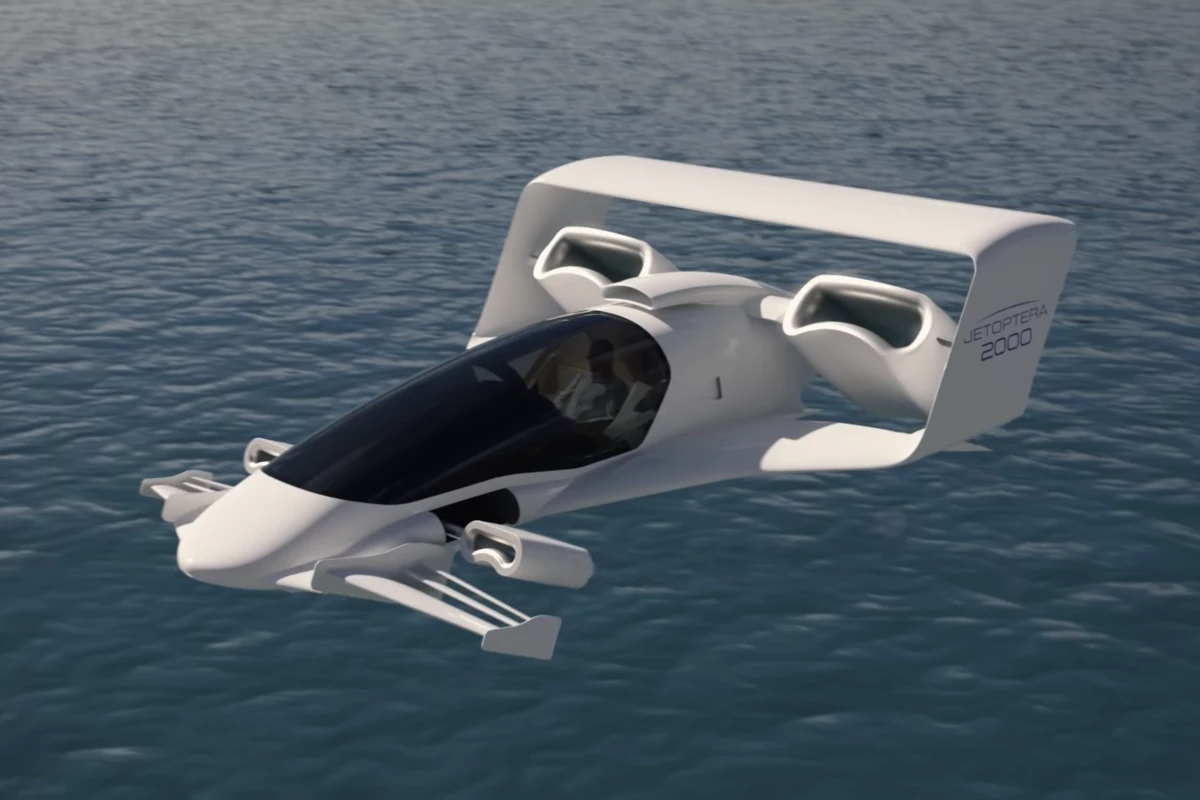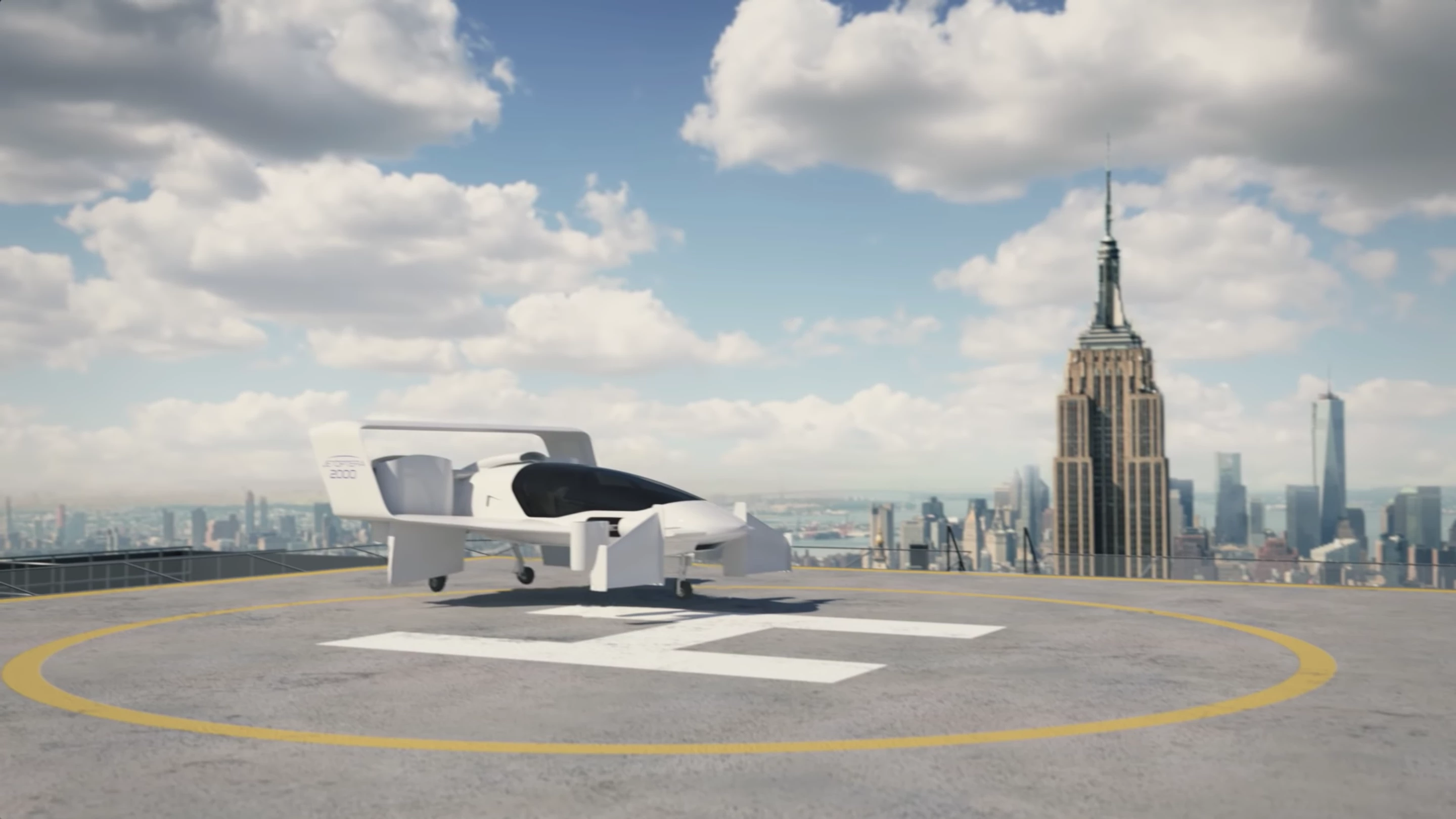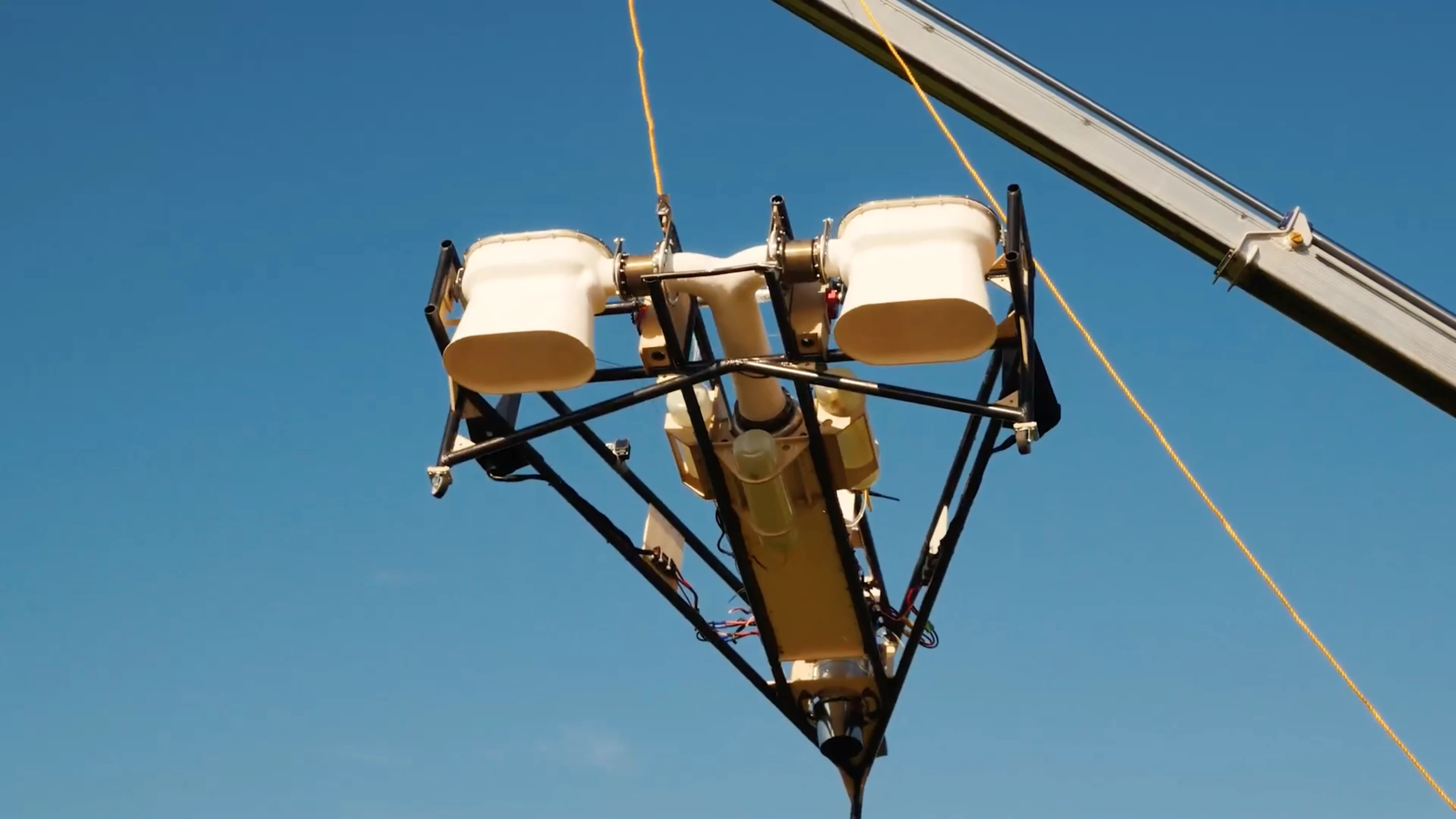One thing nearly all air taxi concepts share in common is fast-spinning propellers or ducted fans somewhere outside the aircraft's fuselage, pushing air to develop thrust whichever way they're pointed.
Not this one out of Seattle, though. Jetoptera's J-2000 concept is a remarkably different take on the VTOL inter-city aircraft, designed to make use of the company's own unique propulsion system. Much like the bladeless fans popularized by Dyson, there are no spinning blades to be seen on Jetoptera's "fluidic propulsion systems (FPS)."
Mind you, as with the Dyson, there are most certainly spinning blades elsewhere in the system. Both devices rely on fluid dynamics to take a relatively small flow of compressed air, and use it to suck a much greater volume of ambient air through at speed. Sir James Dyson does a pretty good job of explaining it here in the context of his fan, which uses a small, quiet impeller to generate pressure around an aerodynamically shaped loop until it exits at high speed through a slit running around the ring.
The air is forced back over a wing-shaped surface all around the ring, where it develops the same kind of negative pressure that gives aircraft their lift. In this case, though, any lift is canceled out by equal negative pressure zones all around the ring, and the net effect is a low-pressure vortex in the center of the ring that pulls ambient air through at a great rate.
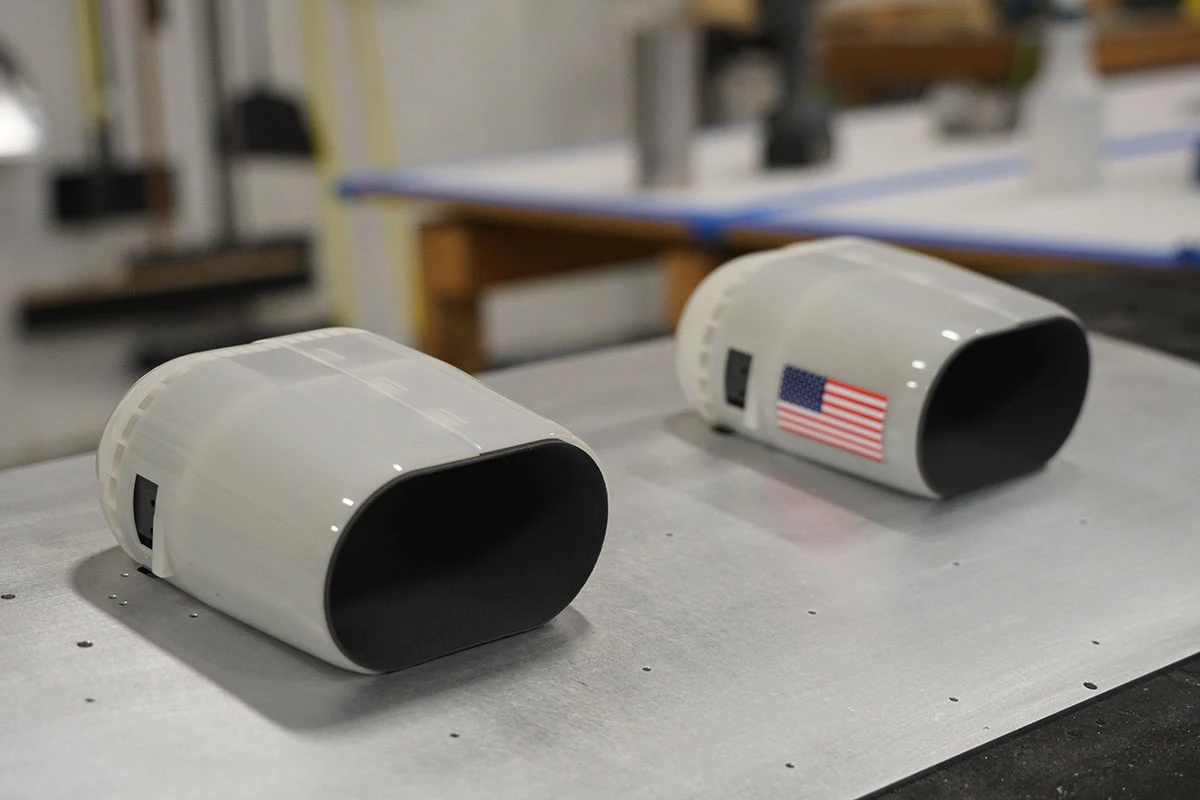
Add to that the weirdness of fluid entrainment – the vortices that develop where the cylinder of accelerated air leaving the ring interacts with the stationary ambient air around it – and these designs can end up sucking through 15 times the volume of air initially fed through the ring by the compressor.
Jetoptera is more or less agnostic about where it gets its compressed air from, although it reasons battery technology will need to reach energy density figures around 1,500 Wh/kg (current state-of-the-art batteries are around 260 Wh/kg) before it'll start making sense to fit the J-2000 with an electric compressor. In the meantime, it's using gas generators, including a 75-kW turboshaft system based on the Acutronic SP75 for larger propulsion system tests.
What are the benefits? Well, according to the company, this kind of system "improves propulsive efficiency by more than 10 percent while lowering fuel consumption by more than 50 percent compared to small turbojets. The propulsion system saves approximately 30 percent in weight compared to turbofans or turboprops and also significantly reduces complexity."
It's also very light and easy to tilt, allowing VTOL lift and hover operations as well as rapid forward cruise flight. And, unlike virtually any other aircraft propulsion system, it doesn't have to be round. These things can take all sorts of shapes, but most interesting are the long, flat ones that follow the shape of the aircraft's wing. Accelerating air back directly over the full width of the wing can develop significant extra lift, and this allows Jetoptera to design box-winged airframes that take up much less space on a vertipad than most transitioning lift/cruise eVTOLs or traditional helicopters.
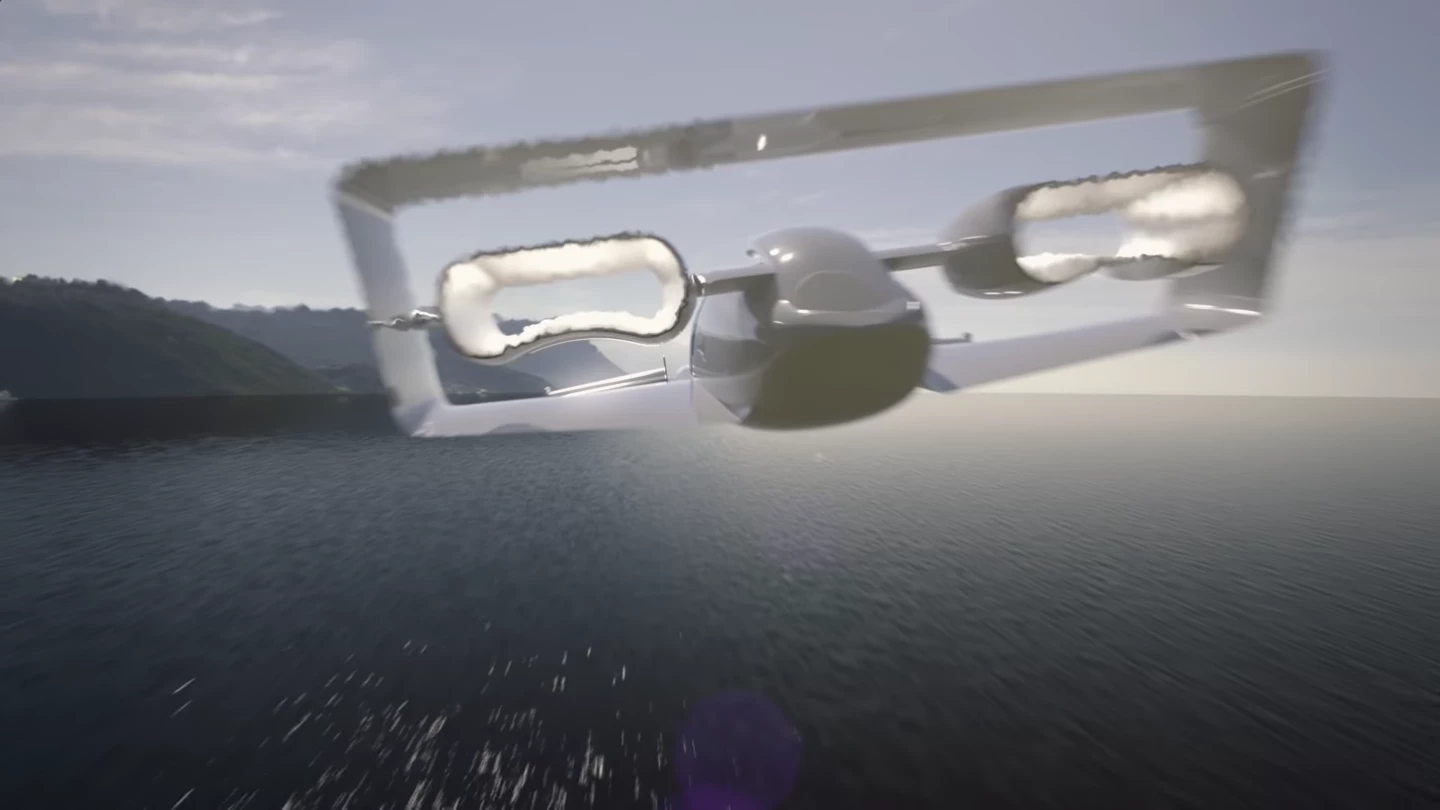
They're relatively easy to stow, and the J-2000 renders show an aircraft that can retract its front two thrusters once it reaches high-speed cruise, to reduce drag and ditch additional unnecessary lift.
One other advantage is noise; Jetoptera says these fluidic propulsion systems are "the most silent propulsion method in the skies." The company subcontracted to Paragrine Systems and undertook noise tests as part of a US DoD-funded research collaboration. The results showed the FPS coming in 15 dBA lower than a propeller with an internal combustion engine making the same level of thrust – and this was before any acoustic treatment. The company says once that's done, these things should be as much as 25 dBA quieter than a comparable propeller; at a distance of 300 m (984 ft), Jetoptera predicts noise levels around 50 dBA, which is equivalent to a normal home, quiet office or refrigerator on various noise charts.
The J-2000 is named for its maximum takeoff weight of 2,000 lb (907 kg), and Jetoptera is planning an entire family of aircraft around this design. This includes high-speed versions designed for 400-mph (644-km/h) speeds with a 400-mile (644-km) range, as well as long-range STOL versions capable of flying 1,200 miles (1930 km) at speeds up to 200 mph (322 km/h). The J-2000 is a cross-town/inter-city two-seater capable of 200-mph top speeds and 200-mile ranges, and a J-4000 is also planned, with the same target range and four seats.

Those range and speed specs are surprisingly subdued in comparison to what the eVTOLs are already doing. Anything flying on fossil fuel, with its sky-high energy density, should be promising massive range compared to anything flying on a battery, and frankly 200 miles with two seats seems curiously short.
Joby Aviation, for example, has a ton of test flights already done on a six-rotor transitioning air taxi that seats five and flies as fast as the J-2000, and 75 percent as far, using batteries that are already commercially available today. As for noise, well, Joby released some pretty incredible video earlier this year that would seem to suggest its open rotor design is plenty quiet. It's not as compact as the J-2000 design, to be fair, but it's already built, flying and in the process of getting certified.
Jetoptera, on the other hand, is still at the prototyping phase. It has flown several subscale models, although up to this point, most of the transitioning VTOL prototypes have been built with ducted fans, and the tail-sitting J-55 VTOL used a pair of ear-splitting Jetcat turbojets not dissimilar to the ones David Mayman hangs off the sides of his jetpacks. The only prototypes to fly with the FPS system appear to be small fixed-wing planes, and the tethered VTOL test platform below.
The company says it's most likely the US Army will get first bite at this cherry, whatever it becomes, announcing last year a collaboration with Honeywell to chase the defense dollar. "The FPS will replace legacy propulsion systems," reads a Honeywell press release, "and should enable faster, safer and less-detectable aircraft." Jetoptera has also recently signed a couple of Small Business Technology Transfer contracts with the US Air Force to study the system's noise profile and the lift potential offered when you blow one of these things directly over the upper surface of the wing.
The J-2000 "flying car" won't be coming until well down the track. Jetoptera only plans for this machine to be a demonstrator platform; it doesn't want to get caught up in the certification nightmare of aircraft development and would prefer just to be building propulsion systems for other aircraft manufacturers.
It's certainly a fascinating system, and the J-2000 looks very sexy in the renders, but a lot of question marks remain for us and we won't be holding our breath waiting to see this one take to the skies.
Source: Jetoptera
